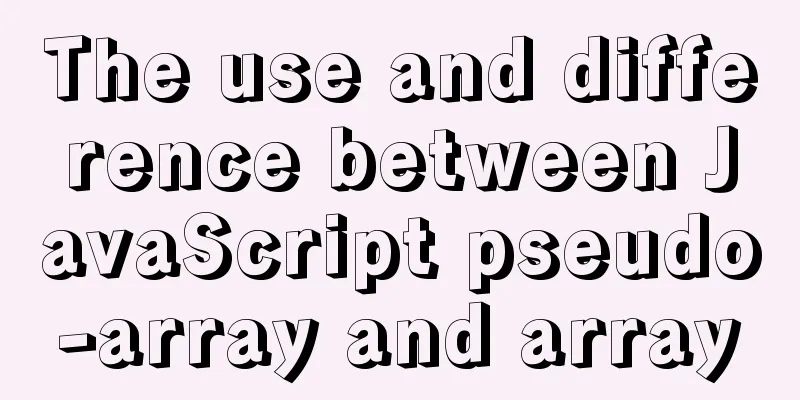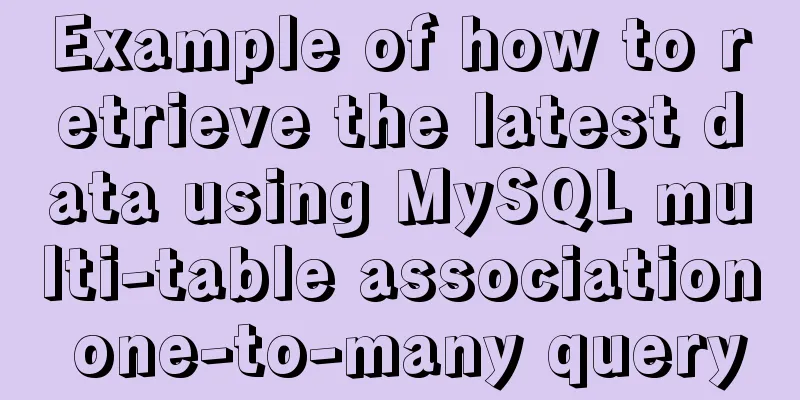The use and difference between JavaScript pseudo-array and array

|
Pseudo-arrays and arrays In JavaScript, except for the five primitive data types, all others are objects, including functions. The relationship between objects and arraysBefore talking about the difference, we need to mention another piece of knowledge, which is JavaScript's prototype inheritance. All JavaScript's built-in constructors inherit from Object.prototype. Under this premise, it can be understood that array objects created using new Array() or [] will have the property values of Object.prototype.
var obj = {}; // has the property value of Object.prototype var arr = [];
//Array created using array literals, because the properties of Array.prototype are inherited from Object.prototype,
//Then, it will have the property values of both Array.prototype and Object.prototypeWe can see the first difference between objects and arrays: objects do not have the property values of arrays Array.prototype. What is an arrayArrays have a basic feature: index, which objects do not have. Let's look at a piece of code:
var obj = {};
var arr = [];
obj[2] = 'a';
arr[2] = 'a';
console.log(obj[2]); // => a
console.log(arr[2]); // => a
console.log(obj.length); // => undefined
console.log(arr.length); // => 3
What is a pseudo array?
A pseudo-array is an object that has a length attribute like an array, and also has attributes such as 0, 1, 2, 3, etc. It looks like an array, but it is not an array. For example:
var fakeArray = {
"0": "first",
"1": "second",
"2": "third",
length: 3
};
for (var i = 0; i < fakeArray.length; i++) {
console.log(fakeArray[i]);
}
Array.prototype.join.call(fakeArray,'+');
Common pseudo-arrays are:
A pseudo-array is an Object, while a real array is an Array. The purpose of pseudo-arrays is to allow ordinary objects to use many methods of arrays normally, such as:
var arr = Array.prototype.slice.call(arguments);
Array.prototype.forEach.call(arguments, function(v) {
// loop over arguments object });
// push
//some
// every
// filter
// map
// ...
The above can be simplified by using array literals when borrowing array prototype methods:
var obj = {
0: 'a',
1: 'b',
2: 'c',
length: 3
}
;[].push.call(obj, 'd')
console.log([].slice.call(obj))
;[].forEach.call(obj, function (num, index) {
console.log(num)
})
The difference between the two1. Length:
2. Use of the method:
summary Objects do not have an array property value. The type of the prototype is Object, while the type of the array is Array. SummarizeThis is the end of this article about the usage and differences of JavaScript pseudo-arrays and arrays. For more relevant JavaScript pseudo-array and array content, please search for previous articles on 123WORDPRESS.COM or continue to browse the related articles below. I hope everyone will support 123WORDPRESS.COM in the future! You may also be interested in:
|
<<: How to add java startup command to tomcat service
>>: Detailed tutorial on installing Nginx 1.16.0 under Linux
Recommend
Summary of js execution context and scope
Table of contents Preface text 1. Concepts relate...
Detailed steps to install Anaconda on Linux (Ubuntu 18.04)
Anaconda is the most popular python data science ...
MySQL sequence AUTO_INCREMENT detailed explanation and example code
MySQL sequence AUTO_INCREMENT detailed explanatio...
Detailed explanation of MySQL 30 military rules
1. Basic Specifications (1) InnoDB storage engine...
LinkedIn revamps to simplify website browsing
Business social networking site LinkedIn recently...
How to fill items in columns in CSS Grid Layout
Suppose we have n items and we have to sort these...
Causes and solutions to the garbled character set problem in MySQL database
Preface Sometimes when we view database data, we ...
Detailed explanation of using echarts map in angular
Table of contents Initialization of echart app-ba...
Using loops in awk
Let's learn about different types of loops th...
Web Design Tutorial (5): Web Visual Design
<br />Previous article: Web Design Tutorial ...
Tutorial on how to modify element.style inline styles
Preface When we were writing the web page style a...
Mysql delete data and data table method example
It is very easy to delete data and tables in MySQ...
Vue3 implements Message component example
Table of contents Component Design Defining the f...
React diff algorithm source code analysis
Table of contents Single Node Diff reconcileSingl...
How to manage large file uploads and breakpoint resume based on js
Table of contents Preface Front-end structure Bac...









